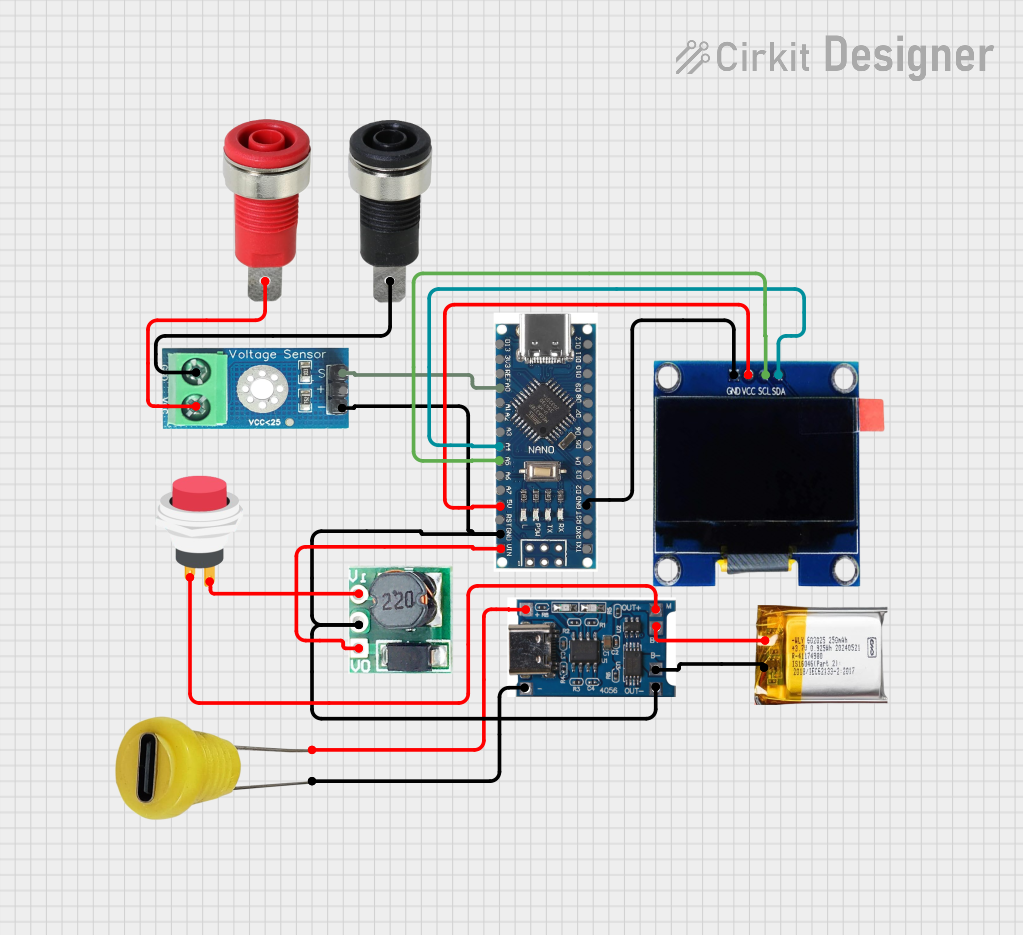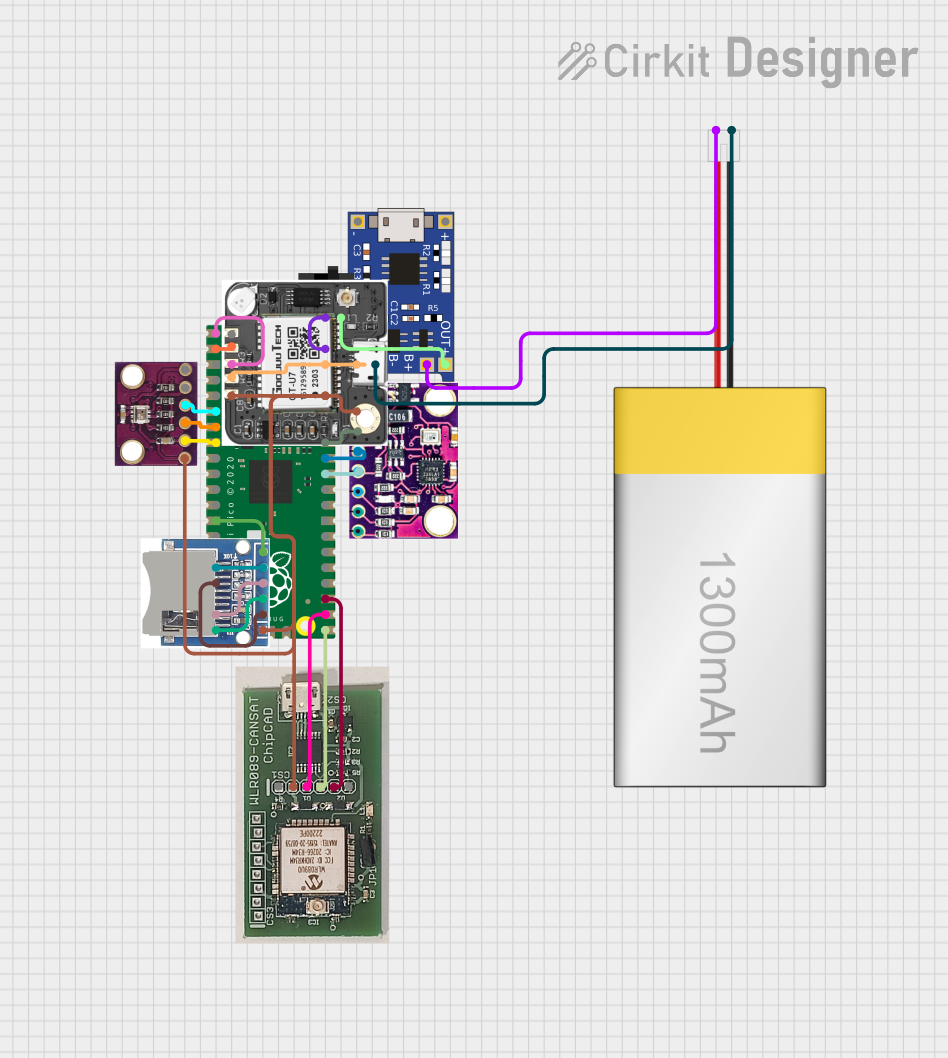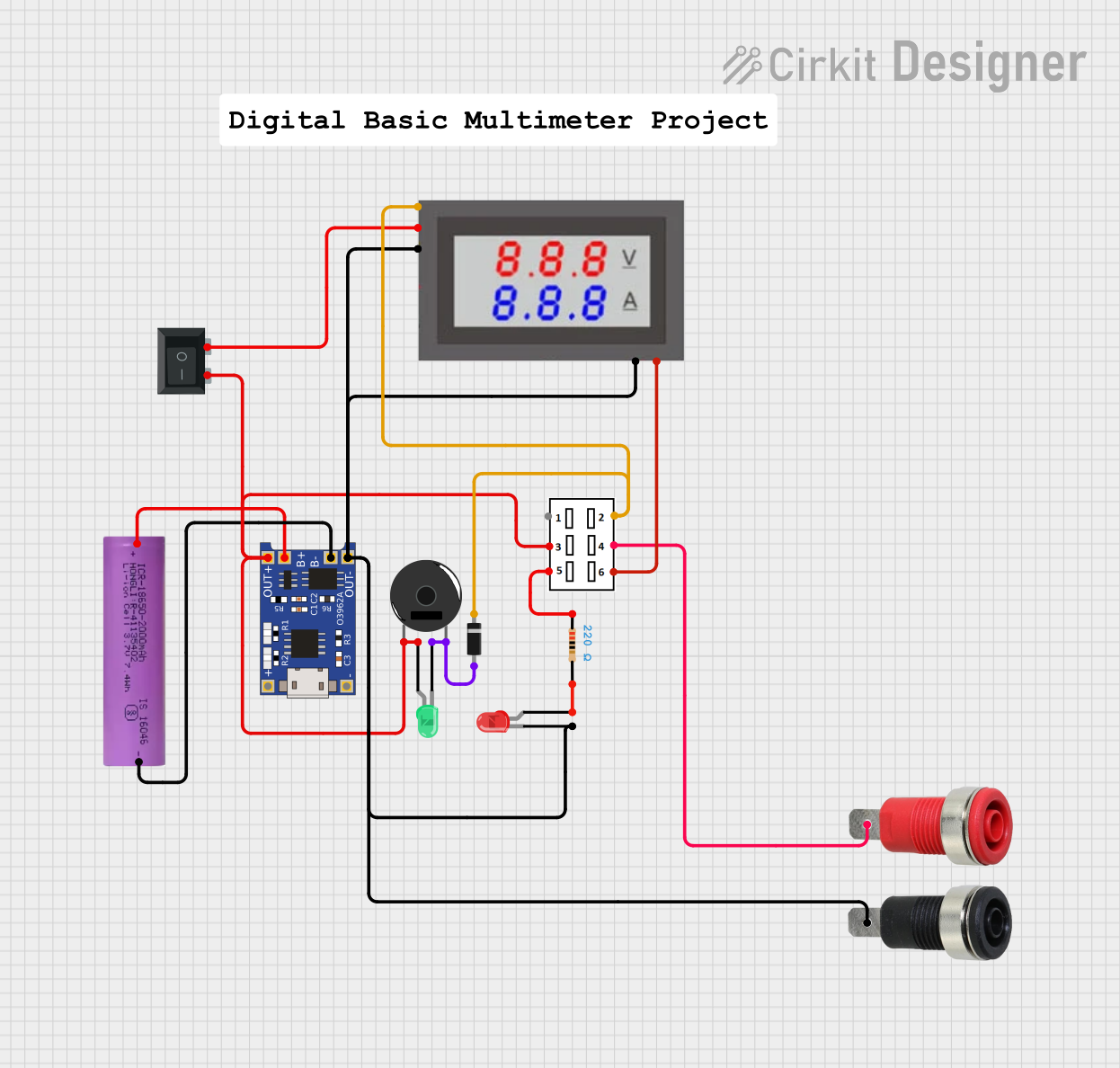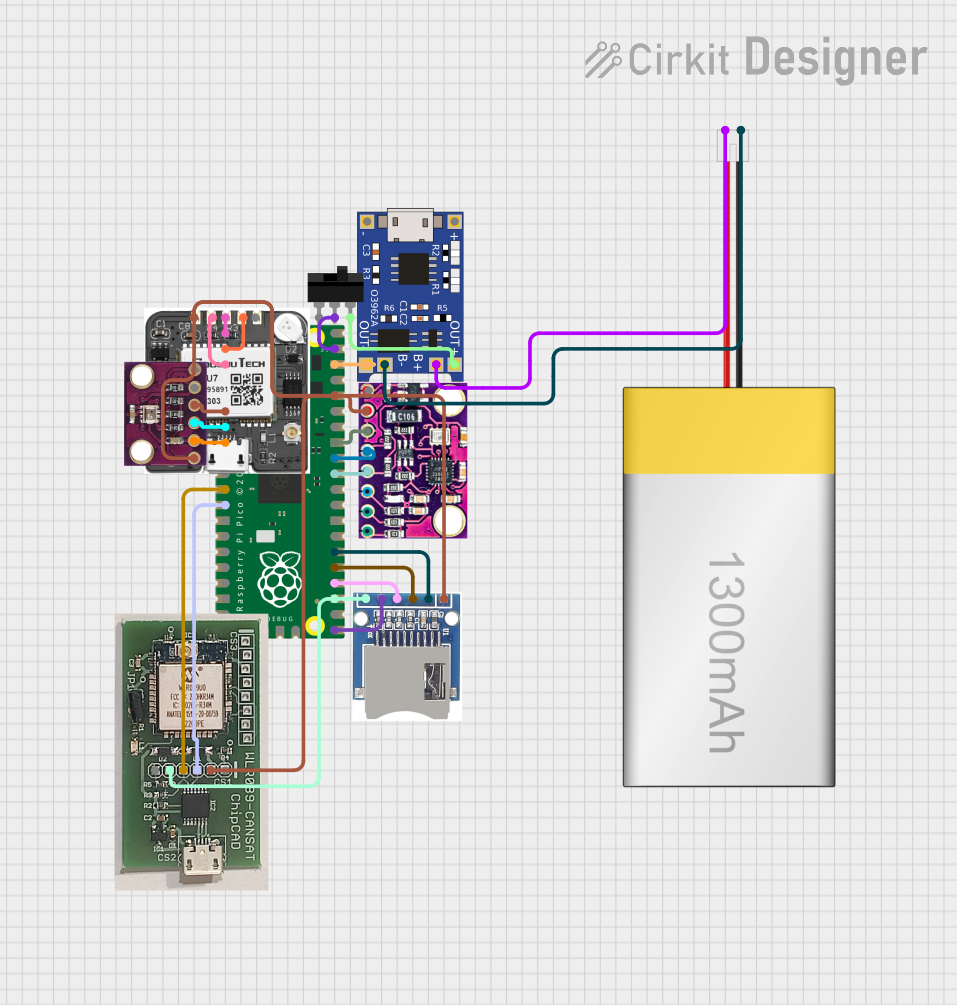
How to Use SparkFun LiPo Fuel Gauge: Examples, Pinouts, and Specs

 Design with SparkFun LiPo Fuel Gauge in Cirkit Designer
Design with SparkFun LiPo Fuel Gauge in Cirkit DesignerIntroduction
The SparkFun LiPo Fuel Gauge is an essential tool for monitoring the state of charge of your single-cell Lithium Polymer (LiPo) batteries. This module is based on the MAX17043 IC and is capable of reporting voltage levels and battery status to your microcontroller, such as an Arduino UNO, over I2C communication. It is commonly used in portable electronics, remote sensors, and any application where battery life monitoring is crucial.
Explore Projects Built with SparkFun LiPo Fuel Gauge

 Open Project in Cirkit Designer
Open Project in Cirkit Designer
 Open Project in Cirkit Designer
Open Project in Cirkit Designer
 Open Project in Cirkit Designer
Open Project in Cirkit Designer
 Open Project in Cirkit Designer
Open Project in Cirkit DesignerExplore Projects Built with SparkFun LiPo Fuel Gauge

 Open Project in Cirkit Designer
Open Project in Cirkit Designer
 Open Project in Cirkit Designer
Open Project in Cirkit Designer
 Open Project in Cirkit Designer
Open Project in Cirkit Designer
 Open Project in Cirkit Designer
Open Project in Cirkit DesignerTechnical Specifications
Key Features
- Voltage Range: 3.3V to 5V
- Battery Type: Single-cell LiPo
- Communication: I2C interface
- Minimum Operating Voltage: 2.5V
- Maximum Operating Voltage: 4.2V (for a single cell)
- Resolution: 1% increments
- Accuracy: ±1%
Pin Configuration and Descriptions
| Pin Name | Description |
|---|---|
| BAT | Connection to the positive terminal of the LiPo battery |
| GND | Ground connection |
| SDA | I2C Data line |
| SCL | I2C Clock line |
| QST | Quick Start pin; typically left unconnected |
| ALRT | Alert interrupt pin; active-low |
Usage Instructions
Connecting to a Circuit
- Connect the
BATpin to the positive terminal of your LiPo battery. - Connect the
GNDpin to the ground terminal of your battery and your microcontroller. - Connect the
SDAandSCLpins to the corresponding I2C data and clock lines on your microcontroller. - The
QSTpin is typically not used and can be left unconnected. - The
ALRTpin can be connected to an interrupt pin on your microcontroller if you wish to use the alert feature.
I2C Communication
The SparkFun LiPo Fuel Gauge communicates over I2C. The default I2C address is 0x36. Ensure that no other device on the I2C bus has the same address.
Arduino Code Example
#include <Wire.h>
// SparkFun LiPo Fuel Gauge I2C address
const int FuelGaugeAddress = 0x36;
void setup() {
Wire.begin(); // Join I2C bus
Serial.begin(9600); // Start serial communication at 9600 baud
}
void loop() {
// Request 2 bytes from the fuel gauge
Wire.beginTransmission(FuelGaugeAddress);
Wire.write(0x04); // State of Charge command
Wire.endTransmission(false);
Wire.requestFrom(FuelGaugeAddress, 2);
// Read the data from the fuel gauge
if (Wire.available() == 2) {
byte msb = Wire.read();
byte lsb = Wire.read();
float stateOfCharge = ((msb << 8) | lsb) / 256.0;
Serial.print("Battery State of Charge: ");
Serial.print(stateOfCharge);
Serial.println("%");
}
delay(1000); // Wait for 1 second before reading again
}
Best Practices
- Avoid exposing the module to temperatures outside the range of -40°C to +85°C.
- Ensure that the battery voltage does not exceed the maximum operating voltage of the module.
- Use pull-up resistors on the I2C lines if your microcontroller does not have built-in pull-ups.
Troubleshooting and FAQs
Common Issues
- Incorrect Readings: Ensure that the battery is properly connected and that the I2C communication is functioning correctly.
- No Communication: Check the wiring, especially the SDA and SCL connections, and ensure that there are no address conflicts on the I2C bus.
- Alert Pin Always Low: Make sure that the alert threshold is properly configured and that the battery voltage is above this threshold.
FAQs
Q: Can the SparkFun LiPo Fuel Gauge be used with batteries other than LiPo?
A: The module is designed specifically for single-cell LiPo batteries and may not provide accurate readings with other types of batteries.
Q: How can I change the I2C address of the module?
A: The I2C address is fixed and cannot be changed.
Q: What should I do if the module gets hot during operation?
A: Disconnect the module immediately and check for any wiring issues or shorts. Ensure that the battery voltage is within the specified range.
For further assistance, please refer to the SparkFun LiPo Fuel Gauge datasheet or contact technical support.